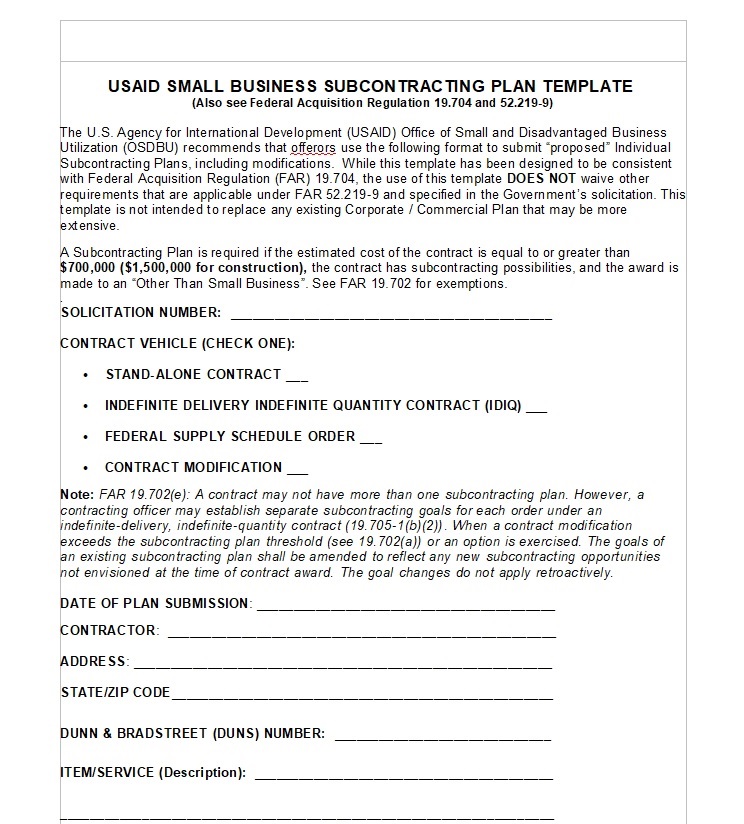- Work With USAID
- How to Work with USAID
- Organizations That Work With USAID
- Find a Funding Opportunity
- Resources for Partners
- Careers
- Get Involved
Speeches Shim
Subcontracting Plan Template ![]() (docx - 52k)
(docx - 52k)
Attachment: Small Business Participation Plan Template (Nov 2019) [MS Excel]
Promoting subcontracting opportunities for small business is a vital component of USAID's small business program. In response to FAR 19.702, negotiated and sealed bid acquisitions that are expected to exceed $700,000 ($1,500,000 for construction); the successful “Other Than Small Business” offeror must provide an acceptable subcontracting plan when the contract has subcontracting possibilities. Contracting Officers are responsible for submitting subcontracting plans to OSDBU for review, prior to final acceptance and approval.
Prime contractors can download a Subcontracting Plan model/template to utilize when responding to USAID solicitations that require subcontracting plans.
It is recommended and necessary for prime contractors to conduct comprehensive market research, to locate qualified small business subcontractors in each SBA socioeconomic category (SDB, WOSB, SDVOSB, HUBzone, VOSB, “ANC and Indian Tribes”). Submitting realistic subcontracting plans is essential for maximum goal achievement.
Subcontracting Plans and ID/IQ Contracts: According to FAR 19.705(e) a contract may not have more than one subcontracting plan. However, a contracting officer may establish separate subcontracting goals for each order under and indefinite-delivery, indefinite-quantity contract (19.705-1(b)(2). When a contract modification exceeds the subcontracting plan threshold (see 19.702(a)) or an option is exercised, the goals of an existing subcontracting plan shall be amended to reflect any new subcontracting opportunities not envisioned at the time of contract award. The goal changes do not apply retroactively.
While this web site is primarily designed as a place for large businesses to post solicitations and notices, the site can also be used by federal agencies, state and local governments, non-profit organizations, colleges and universities, and even small businesses for the same purpose. Instead of marketing blindly to hundreds of contractors with no certainty that a given company has a need for a particular product or service, small businesses can use this resource to identify concrete, tangible opportunities.


Comment
Make a general inquiry or suggest an improvement.